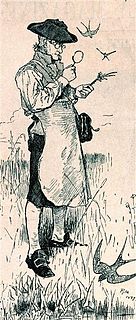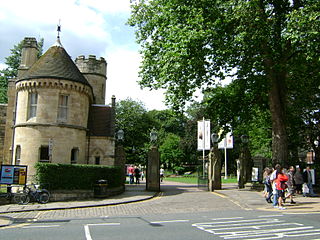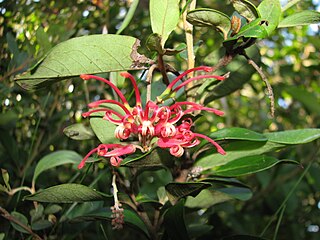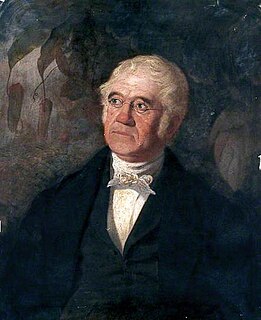
John Bartram was an early Anglo-American colonial botanist, horticulturist, and explorer, based in Philadelphia, Pennsylvania, for most of his career. Swedish botanist and taxonomist Carl Linnaeus said he was the "greatest natural botanist in the world."

Ordinary language philosophy is a philosophical methodology that sees traditional philosophical problems as rooted in misunderstandings philosophers develop by distorting or forgetting what words actually mean in everyday use. "Such 'philosophical' uses of language, on this view, create the very philosophical problems they are employed to solve." Ordinary language philosophy is a branch of linguistic philosophy closely related to logical positivism.

Cassiope is a genus of 9-12 small shrubby species in the family Ericaceae. It is the sole genus in the subfamily Cassiopoideae. They are native to the Arctic and north temperate montane regions. The genus is named after Cassiopeia of Greek mythology. Common names, shared with several other similar related genera, include heather and heath. They have scale-like leaves lying against the stems, and produce solitary bell-shaped flowers in late spring. Though hardy, flowers can be damaged by late frosts.

Baron Sir Ferdinand Jacob Heinrich von Mueller, was a German-Australian physician, geographer, and most notably, a botanist. He was appointed government botanist for the then colony of Victoria (Australia) by Governor Charles La Trobe in 1853, and later director of the Royal Botanic Gardens, Melbourne. He also founded the National Herbarium of Victoria. He named many Australian plants.

The Abbey of St Mary is a ruined Benedictine abbey in York, England and a Grade I scheduled monument.

Antonio José Cavanilles was a leading Spanish taxonomic botanist of the 18th century. He named many plants, particularly from Oceania. He named at least 100 genera, about 54 of which were still used in 2004, including Dahlia, Calycera, Cobaea, Galphimia, and Oleandra. The standard author abbreviation Cav. is used to indicate this person as the author when citing a botanical name.
The Cambridge Philosophical Society (CPS) is a scientific society at the University of Cambridge. It was founded in 1819. The name derives from the medieval use of the word philosophy to denote any research undertaken outside the fields of law, theology and medicine. The society was granted a royal charter by King William IV in 1832.

The York Museum Gardens are botanic gardens in the centre of York, England, beside the River Ouse. They cover an area of 10 acres (4.0 ha) of the former grounds of St Mary's Abbey, and were created in the 1830s by the Yorkshire Philosophical Society along with the Yorkshire Museum which they contain.

Schönau an der Triesting is a town in the district of Baden in Lower Austria in Austria.

The Yorkshire Philosophical Society (YPS) is a charitable learned society which aims to promote the public understanding of the natural sciences, the social sciences, and the archaeology and history of York and Yorkshire.

Grevillea manglesii is a shrub which is endemic to an area around Perth in Western Australia. It usually grows to around 3 metres in height and 4 metres in width and produces white flowers throughout the year.

Grevillea hilliana, of the plant family Proteaceae, is a species of Australian endemic trees known by many common names including white yiel yiel, white silky oak, grey oak, Hill's silky oak, and yill gill.
The "Taliaferro", "Robinson" or "Robertson" was a small-sized apple grown at Monticello by Thomas Jefferson. This cultivar appears to be extinct, though some horticulturalists assert that the 'Highland County' cultivar may be related, or even the same cultivar under a different name.

Hoter ben Shlomo was a scholar and philosopher from Yemen who was heavily influenced by the earlier works of Natan'el al-Fayyumi, Maimonides, Saadia Gaon and al-Ghazali.

Grevillea confertifolia, commonly known as Grampians grevillea or dense-leaf grevillea, is a shrub species which is endemic to the Grampians in western Victoria in Australia.

Grevillea miqueliana, commonly known as oval-leaf grevillea, is a shrub that is endemic to mountainous areas of eastern Victoria in Australia. It grows to between 1.5 and 2.5 metres in height. The species was first formally described by botanist Ferdinand von Mueller, his description published in Transactions of the Philosophical Society of Victoria in 1855. The species epithet honours Dutch botanist Friedrich Anton Wilhelm Miquel (1811-1871).
Mian Mohammad Sharif TI, was an influential Pakistani philosopher, Islamic scholar, and college professor. He is noted for his notable work in analytical philosophy and pioneered the idea of Muslim philosophy. He wrote on this subject and his work was published in international philosophical journals.

Henry Baines was a notable botanist who lived in York.

The National Herbarium of New South Wales was established in 1853. The Herbarium has a collection of more than 1.4 million plant specimens, making it the second largest collection of pressed, dried plant specimens in Australia, including scientific and historically significant collections and samples of Australian flora gathered by Joseph Banks and Daniel Solander during the voyage of HMS Endeavour in 1770.

William Jacob Robbins (1890–1978) was an American botanist and physiologist. He attended Lehigh University from 1906 to 1910 and earned a Ph.D. from Cornell University in 1915. He was director of the New York Botanical Garden from 1937 to 1957. He was a member of the National Academy of Sciences and the American Philosophical Society, serving as president of the latter from 1956 to 1959. In 1943 he served as president of the Botanical Society of America and Torrey Botanical Club. The standard author abbreviation W.J.Robbins is used to indicate this person as the author when citing a botanical name. He was the father of virologist and Nobel Prize Laureate Frederick Chapman Robbins.

















